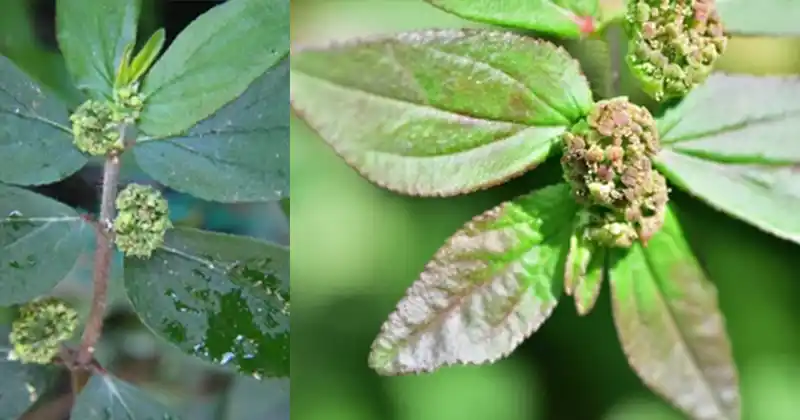Euphorbia hirta, commonly known as asthma-plant, is a versatile and historically significant plant with a variety of traditional uses. Its uses span several cultures, particularly in traditional medicine. Here’s a comprehensive overview of its traditional applications and uses:
1. Traditional Uses of Euphorbia Hirta
a. Asthma and Respiratory Conditions
- Primary Use: As the name suggests, Euphorbia hirta has been traditionally used to treat asthma. Its expectorant properties help in relieving symptoms associated with asthma and bronchitis.
- Application: The plant is often used in teas, decoctions, or extracts to help alleviate breathing difficulties.
b. Digestive Disorders
- Uses: In traditional medicine, Euphorbia hirta is used to treat digestive issues such as diarrhea, dysentery, and stomach cramps.
- Preparation: Typically used in the form of infusions or tinctures.
c. Wound Healing and Skin Conditions
- Uses: The plant has been applied topically to treat wounds, sores, and skin infections due to its purported antimicrobial and anti-inflammatory properties.
- Application: Usually applied as a poultice or in the form of a topical ointment.
d. Diuretic and Anti-inflammatory Effects
- Uses: Euphorbia hirta is also used as a diuretic to increase urine production and help with conditions like edema and urinary tract infections.
- Application: Consumed as tea or tincture.
2. Preparation and Dosage
a. Tea
- Method: Boil the leaves and stems in water. Strain and consume as a herbal tea.
- Dosage: Typically, a cup of tea made from a few grams of dried plant material is consumed 2-3 times a day.
b. Decoction
- Method: Boil the plant parts in water for a longer period to extract more of the plant’s properties.
- Dosage: Similar to tea, but the concentration may be higher depending on the preparation.
c. Poultice
- Method: Crush fresh plant parts into a paste and apply directly to affected areas.
- Application: Used for treating skin issues and wounds.
d. Tincture
- Method: Soak the plant material in alcohol or vinegar to extract its active components.
- Dosage: Typically taken in small amounts (a few drops to a teaspoon) diluted in water.
3. Cultural and Regional Applications
a. Traditional Medicine Systems
- Ayurvedic Medicine: Used in Ayurvedic practices to treat respiratory and digestive issues.
- Traditional Chinese Medicine (TCM): Applied in some traditional Chinese medicinal practices for its respiratory benefits.
b. African Medicine
- Regional Use: In various African countries, Euphorbia hirta is used for treating coughs, colds, and gastrointestinal problems. It is also used in traditional rituals and remedies.
c. Indigenous Practices
- Local Use: Indigenous communities in the Americas and Asia use Euphorbia hirta in various traditional medicine practices.
4. Safety and Precautions
- Toxicity: Euphorbia hirta, like many Euphorbia species, contains latex that can be irritating to the skin and mucous membranes. It’s essential to handle the plant with care and avoid direct contact with the latex.
- Consultation: Always consult with a healthcare provider before starting any new herbal treatment, especially if you are pregnant, nursing, or have underlying health conditions.
- Dosage: Use the plant in recommended amounts, as excessive use may lead to adverse effects.
5. Scientific Research and Efficacy
- Limited Evidence: While Euphorbia hirta has a long history of traditional use, scientific research on its effectiveness is limited. Some studies have supported its use in treating certain conditions, but more research is needed to confirm its benefits and safety.
In summary, Euphorbia hirta has a rich tradition of use across various cultures for respiratory, digestive, and skin conditions. Its applications are grounded in traditional practices, though modern scientific validation is still ongoing. As with any herbal remedy, caution and consultation with a healthcare provider are advised.
